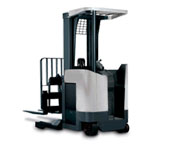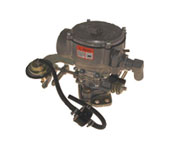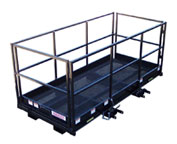
Forklift Brake - A brake drum is where the friction is supplied by the brake pads or brake shoes. The shoes or pads press up against the rotating brake drum. There are some other brake drums kinds together with certain specific differences. A "break drum" would generally refer to if either pads or shoes press onto the interior outside of the drum. A "clasp brake" is the term used so as to describe when shoes press against the outside of the drum. Another kind of brake, referred to as a "band brake" makes use of a flexible belt or band to wrap round the exterior of the drum. Where the drum is pinched in between two shoes, it can be called a "pinch brake drum." Like a standard disc brake, these types of brakes are quite rare.
Old brake drums, before 1955, required to be consistently modified in order to compensate for wear of the shoe and drum. "Low pedal" could cause the needed modifications are not performed satisfactorily. The vehicle could become hazardous and the brakes could become ineffective whenever low pedal is combined along with brake fade.
There are several various Self-Adjusting systems for braking obtainable these days. They could be classed into two separate categories, the RAI and RAD. RAI systems are built-in systems that help the apparatus recover from overheating. The most recognized RAI makers are AP, Bendix, Lucas, and Bosch. The most well-known RAD systems consist of AP, Bendix, Ford recovery systems and Volkswagen, VAG.
The self adjusting brake will normally only engage when the lift truck is reversing into a stop. This method of stopping is suitable for use whereby all wheels utilize brake drums. Disc brakes are used on the front wheels of vehicles today. By working only in reverse it is less likely that the brakes would be applied while hot and the brake drums are expanded. If tweaked while hot, "dragging brakes" can take place, which increases fuel expenditure and accelerates wear. A ratchet mechanism that becomes engaged as the hand brake is set is another way the self adjusting brakes can operate. This means is only appropriate in applications where rear brake drums are utilized. Whenever the emergency or parking brake actuator lever goes over a particular amount of travel, the ratchet improvements an adjuster screw and the brake shoes move in the direction of the drum.
There is a manual adjustment knob situated at the bottom of the drum. It is generally adjusted through a hole on the opposite side of the wheel and this requires getting under the forklift together with a flathead screwdriver. It is of utmost significance to move the click wheel correctly and adjust each wheel evenly. If uneven adjustment takes place, the vehicle can pull to one side during heavy braking. The most efficient way to be able to make sure this tedious task is done carefully is to either lift each wheel off the ground and spin it by hand while measuring how much force it takes and feeling if the shoes are dragging, or give each one the exact amount of clicks manually and then perform a road test.
![]() Click to Download the pdf
Click to Download the pdf
Forklift Parts








Lift Parts Express
TOLL FREE: 1-888-695-7994
LOCAL: 650-451-7032
235 WESTLAKE CENTER 223
Daly City, California
forkliftpartsdalycity.com
Email Us
About Us



